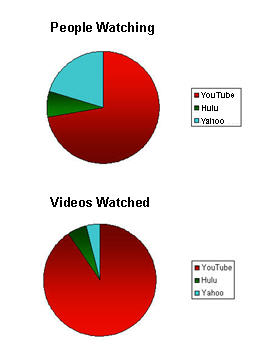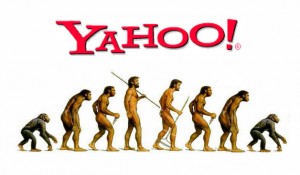
If you’re an average online-video watcher, then today you’ll watch about 2 videos, and spend 6 minutes doing so. You’ll most likely be on YouTube, but if you’re watching long-form television on Hulu you’re probably skewing the average by watching for much longer per session/view.
People watching online video in the U.S. now watch more than three hours per month, according to new data from Nielsen Online. Studies suggest people, on average, have sex once a week. My sources on sexual frequency and duration are a bit sketchy here, so you can do your own digging.
So, friends, you’re probably watching online-videos for more time each month than you are having sex — depending, of course, on whether you’re one of those 2.7 minute “slam bam thank you mam” YouTube people, or if you prefer the longer forplay of “Hulu-like” engagements.
And I’m not sure all of that online-video viewing is going to help you in the sex department, but it’s a more reliable, albeit often less climaxic, alternative.
Check out Stephen Shankland’s “Online Viewing Clears Three Hours Per Month.” Neilsen is the source. Do you know how silly that headline will look by the end of the year? First, we’ll have a more difficult time what’s occuring “online” versus “offline” as devices merge. Second, because that three hours will grow dramatically as people begin to consume an episode of Lost (which is, by my crude calculations, roughly the same time it would take to consume about 20 or so short videos on YouTube).
Here are some other notable points from Shanland, and a pretty chart so you can see that YouTube is dominating viewers and videos viewed. But this is going to change when we look at duration spent per site. After all, Hulu has longer-form content, and Yahoo’s 25 million users could, with a little prompting by Yahoo, start watching more video. Hulu has more ad inventory than it has sold, and one can only assume the ad inventory isn’t sufficient for Yahoo to compel its visitors to consume video. Or perpahs Yahoo visitors are busy enjoying display ads and drinking their Tabs or Mr. Pibbs.
- March viewing rose 13 percent to 191 minutes. Total video streams viewed increased 9 percent from 8.9 billion to 9.7 billion. And the number of videos per user grew 7 percent from about 70 to 74.
- If time spent is going up faster than videos streamed, that means a) we’re tolerating 2.7-minute YouTube clips, or b) Longer form content is skewing the average, and we’re continuing to expect our YouTube clips to be 2-3 minutes. I suspect the latter, but Neilsen and the Shankenizer aren’t saying.

The market share:
- Google’s YouTube continues to dominate the category, with 5.5 billion videos and 89 million people using the service in the U.S.
- Hulu is in second place with 348 million videos and 9 million users.
- Yahoo is in third place with 232 million videos, but it’s got more users than Hulu, about 25 million users.
- Revver is not ranking.



